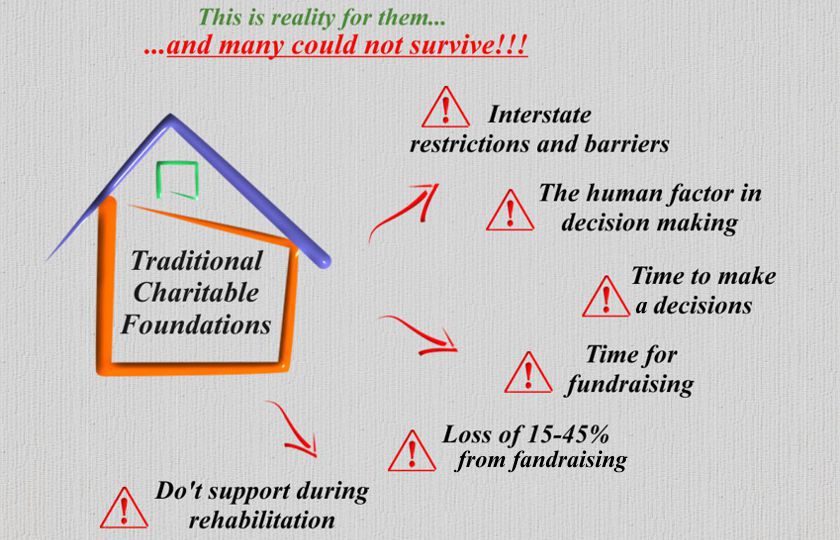- Are you with us? Let's create a people's charity Ecosystem together.
We create the conditions ourselves, which largely determine the rules of this activity. But, these rules at the same time allow you to parasitize in this segment. And most importantly, it's still the same "Human factor".
1. The human factor

We know that weeks and months pass from the moment of asking for help - This is a request and data collection, analysis by a fund employee and approval of assistance, development of a fundraising card for a specific person (a web page, video with him, advertising, etc.), fundraising from third parties, subsequent transfers. And for frequent, requests stay unsatisfied and the person stays in a helpless position. That's exactly where the human factor lies. We do not know what influenced some employee to ignore or refuse the appeal, and we won`t guess. This may be a personal fortune or a bureaucratic quibble with the appeal, and the needy goes to another fund and so on. Well, it was still possible to cope with the disease and go the way from raising funds and paying for treatment, then at the stage of rehabilitation and recovery, a person breaks down and his loved ones give up. He has already spent all his strength and savings on fighting, and this includes moving, accommodation, food for him and his loved ones, and so on, which is under the tip of the iceberg of the treatment itself. His recovery may take several months and he still needs support for this rehabilitation or medications. And very few people look at this period of life at all.
2. Not much specifics
The existing model of charity is a fairly regulated activity by the states, and at the same time losses from the collection of targeted funds reach more than 40%. Yes, that's how much money is spent not on real help, but on products related to fundraising and the activities of a charitable organization.
- the costs of the fund of the fundraising are 15-30% (according to the law)
- Fundraising via SMS up to 30% (the owner of the number receives)
- Fundraising with calls up to 30% (the owner of the number receives)
- Commissions for transfers from fundraising directions (2-5%)
- Final Transfer commissions (0.5-3%)
- and there are also services, advertisers, consultants (to create a specific marketing product to raise funds for each applicant)
The average figure depends on the shares with which the funds were raised.
- Funds received directly to the fund - Retention of 15-30% by the fund according to the law for its activities + commissions for subsequent transfers + other marketing costs = 20-40%
- Funds received through fundraising by phone (SMS /Calls) - Deduction of 20-30% by the owner of a short number + 15-30% by the fund according to the law for its activities + commissions for subsequent transfers + other marketing costs = 45-65%
- Fundraising with calls up to 30% (the owner of the number receives)
This is where the average figure is obtained, depending on the channels of receipt of funds.
3. The justice
Let's talk about justice - After all, it is not difficult to guess that it is easier to raise money for the treatment of a sick child than for the treatment of a middle-aged woman with two young children. Here, any marketer will give preference to working with a more attractive picture, and if we take into account the financial interest (commissions from fundraising), then we can prioritize the work of those involved in fundraising. Do you think this is fair? In any case, we are talking about life, the life of not one sick person, but of a whole generation.